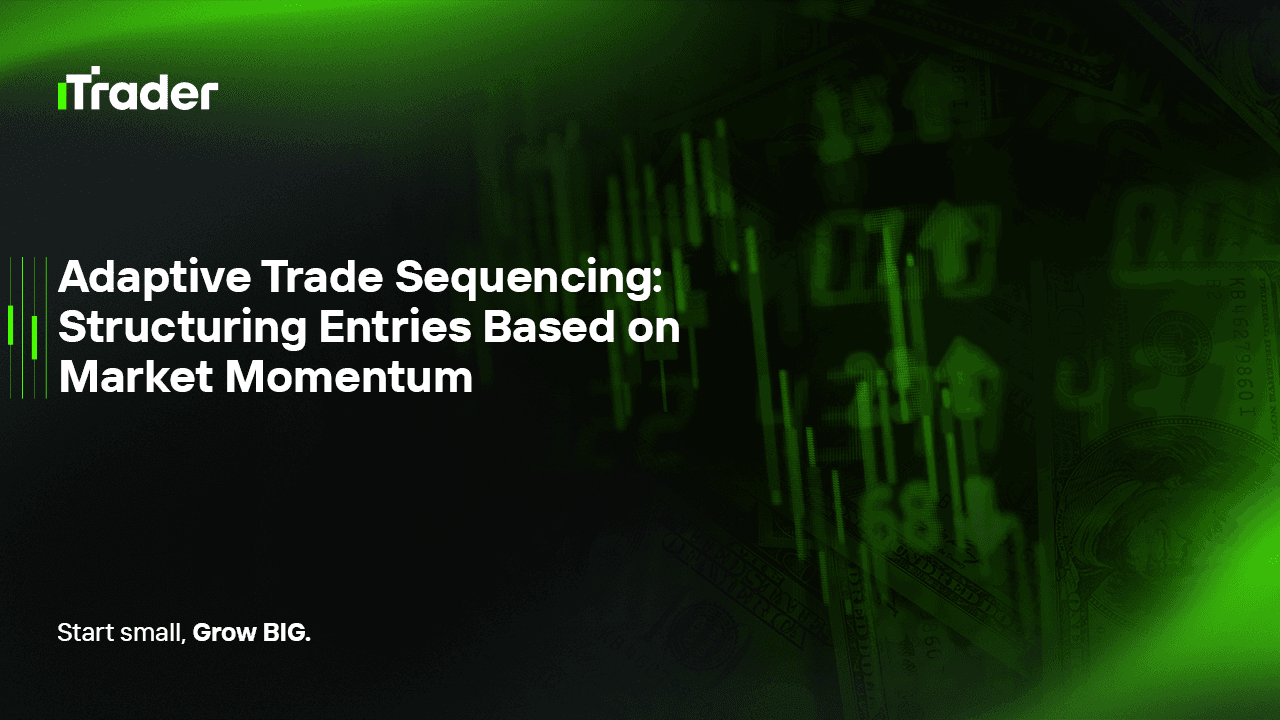2025-10-27
In forex trading, many traders obsess over finding the “perfect entry.” Yet at a professional level, an entry is not a single action — it’s part of a managed sequence that evolves with market flow. A market impulse — driven by momentum, liquidity flow, and order imbalance — is a dynamic burst of price movement. Designing your entry sequence to align with these impulses is known as sequencing-based trade planning.

For prop traders, this approach goes beyond identifying one profitable setup. It’s about using market energy to maximize efficiency, compound gains, and manage risk dynamically through every phase of a move.
A trade sequence represents a structured series of entries and exits built around one market narrative or trading idea.
In essence:
This marks the transition from static entry to dynamic execution — from reacting to the market to moving with it.
Market impulses — sharp directional movements often followed by short consolidations — emerge when liquidity and momentum converge.
They typically involve:
After the impulse, a pullback or re-accumulation phase often follows. Recognizing where you are in this impulse cycle is the foundation for effective sequencing.
Dynamic sequencing is the practice of managing entries in phases that adapt to market confirmation and momentum.
The typical structure includes:
This structure — sometimes referred to as an Adaptive Layered Entry Model — isn’t about averaging down. Instead, it’s about compounding into strength, using the market’s own energy to enhance position efficiency.
Each step builds on information from the previous one, maintaining flexibility without compromising control.
Dynamic sequencing can be modeled algorithmically using key quantitative variables such as:
A simplified decision logic may look like this:
This framework represents quantitative impulse detection — a systematic way to align trade execution with the evolving market structure.
No algorithm can fully interpret the context behind every impulse. Human judgment adds the nuance required for adapting dynamically.
Not all impulses are equal. A post-FOMC breakout carries a different weight than a random Asian-session spike.
Experienced traders can distinguish between sustainable momentum and short-lived noise — a skill algorithms often lack.
Impulses can fade quickly. Traders can apply time filters to delay or confirm entries — for example, waiting for a five-minute structure to form before engaging.
Adding to winning positions feels counterintuitive to most traders, yet in momentum-driven markets, it’s often the most efficient way to compound gains.
Human awareness allows the trader to execute this logically, not emotionally.
In the prop trading environment, dynamic sequencing helps balance risk control and equity acceleration — two critical performance pillars.
By scaling in progressively, traders prevent risk from clustering in a single entry point, reducing the chance of breaching daily loss or drawdown limits.
Incremental entries during valid impulses improve capital utilization efficiency. Rather than committing full risk upfront, capital is deployed where the market confirms its direction.
Prop traders who recognize the “impulse” in their equity curve can align their trade sequencing accordingly — expanding during growth phases and contracting during stagnation.
This transforms their approach from reactive to self-adaptive.
Instead of testing only setups, evaluate the sequencing logic — e.g., “How effective were my momentum-based add-ons after the first entry?”
Test your sequencing performance across different regimes (range-bound vs. trending) to ensure adaptability.
Monitor execution variables like latency, slippage, and spread changes that affect the integrity of sequencing — essential in automated or semi-automated prop environments.
Modern AI-driven execution systems are now learning to manage trade sequences in real time.
This integration of algorithmic intelligence with trader intuition — the Human-in-the-Loop framework — defines the next evolution of professional execution systems.
© 2025 iTrader Global Limited | Company registration number 15962
iTrader Global Limited is located at Hamchako, Mutsamudu, Autonomous Island of Anjouan, Union of Comoros, The Comoros and is licensed and regulated by the Securities Commission of the Comoros. Our license number L15962/ ITGL
iTrader Global Limited, operating under the trading name “iTrader,” is authorized to engage in Forex trading activities. The company’s logo, trademark, and website are the exclusive property of iTrader Global Limited.
Risk Warning: CFD trading carries a high risk of rapid capital loss due to leverage and may not be suitable for all users.
Trading in funds, CFDs, and other high-leverage products requires specialized knowledge.
Research indicates that 84.01% of leveraged traders incur losses. Please ensure you fully understand the risks and are prepared to lose your capital before engaging in leveraged trading.
iTrader hereby states that it will not be held fully responsible for leveraged trading risks, losses, or other damages incurred by any individual or legal entity.
The news and information provided on this website are for educational purposes only. Users should make independent and informed financial decisions.
Restrictions: iTrader does not direct its website or services to residents of countries where such activities are prohibited by law, regulation, or policy. If you reside in a jurisdiction where the use of this website or its services is restricted, you are responsible for ensuring compliance with local laws. iTrader does not guarantee that the content of its website is appropriate or lawful in all jurisdictions.
iTrader Global Limited does not provide services to citizens of certain countries, including (but not limited to): the United States, Brazil, Canada, Israel, and Iran.